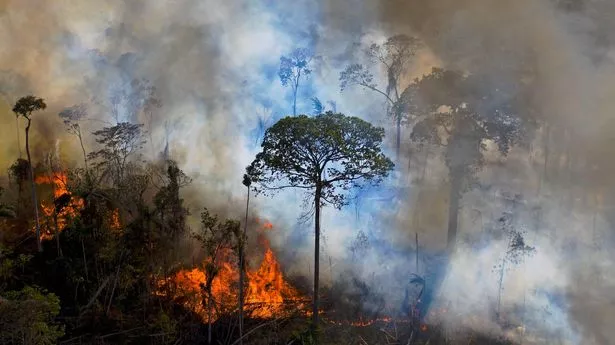The World Meteorological Organization (WMO) has said that the concentration of planet-heating pollutants clogging the atmosphere hit record levels in 2023.
Among other things, the body found carbon dioxide is accumulating faster than at any time in human history, with concentrations having risen by more than 10% in just two decades.
“Another year, another record,” said Celeste Saulo, secretary-general of the WMO. “This should set alarm bells ringing among decision makers.”
The increase, according to the organization, was driven by humanity’s “stubbornly high” burning of fossil fuels, the WMO found, and made worse by big wildfires and a possible drop in the ability of trees to absorb carbon. The concentration of CO2 reached 420 parts per million (ppm) in 2023, the scientists observed. The level of pollution is 51% greater than before the Industrial Revolution, when people began to burn large amounts of coal, oil and fossil gas.
Concentrations of strong but short-lived pollutants also surged. Methane concentrations hit 1,934 parts per billion (ppb), a rise of 165% from preindustrial levels, and nitrous oxide hit 336.9 parts per billion (ppb), a rise of 25%, it said.
Read also: Report: Miscarriages due to climate crisis a ‘blind spot’ in action plans
Saulo said: “We are clearly off track to meet the Paris Agreement goal of limiting global warming to well below 2C and aiming for 1.5C above preindustrial levels. These are more than just statistics. Every part per million and every fraction of a degree temperature increase has a real impact on our lives and our planet.”
Burning fossil fuels – such as the petrol to power a car or the coal to feed a thermal power plant – releases gases that trap sunlight and heat the planet.
The WMO warned that this heating can lead to climate feedbacks that are “critical concerns” to society, such as stronger wildfires that pump out more carbon and hotter oceans that suck up less CO2.
There has been a slight slowdown in the growth of global emissions over the last decade but continued strong growth in atmospheric concentrations, said Glen Peters, a climate scientist at the Cicero in Norway, who was not involved in the study. “[That] should give us cause for thought on how strong carbon sinks will remain in a changing climate.”
The Earth last experienced a comparable concentration of CO2 a few million years ago, when the planet was 2-3C hotter and the sea level 10-20 metres higher.
Story was adapted from the Guardian.
